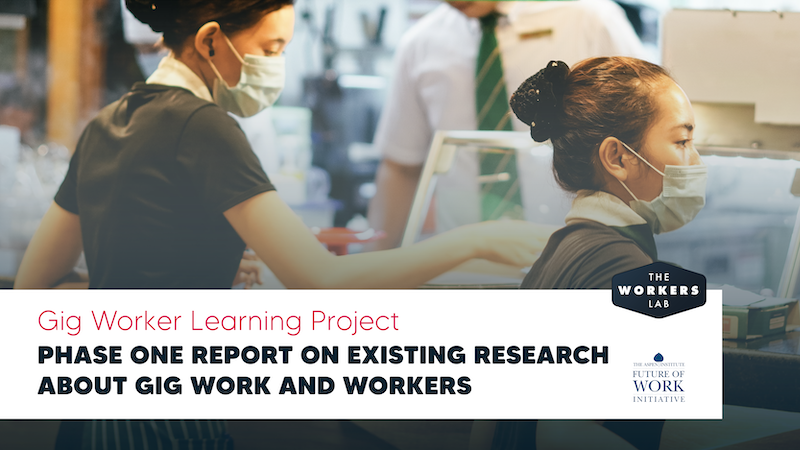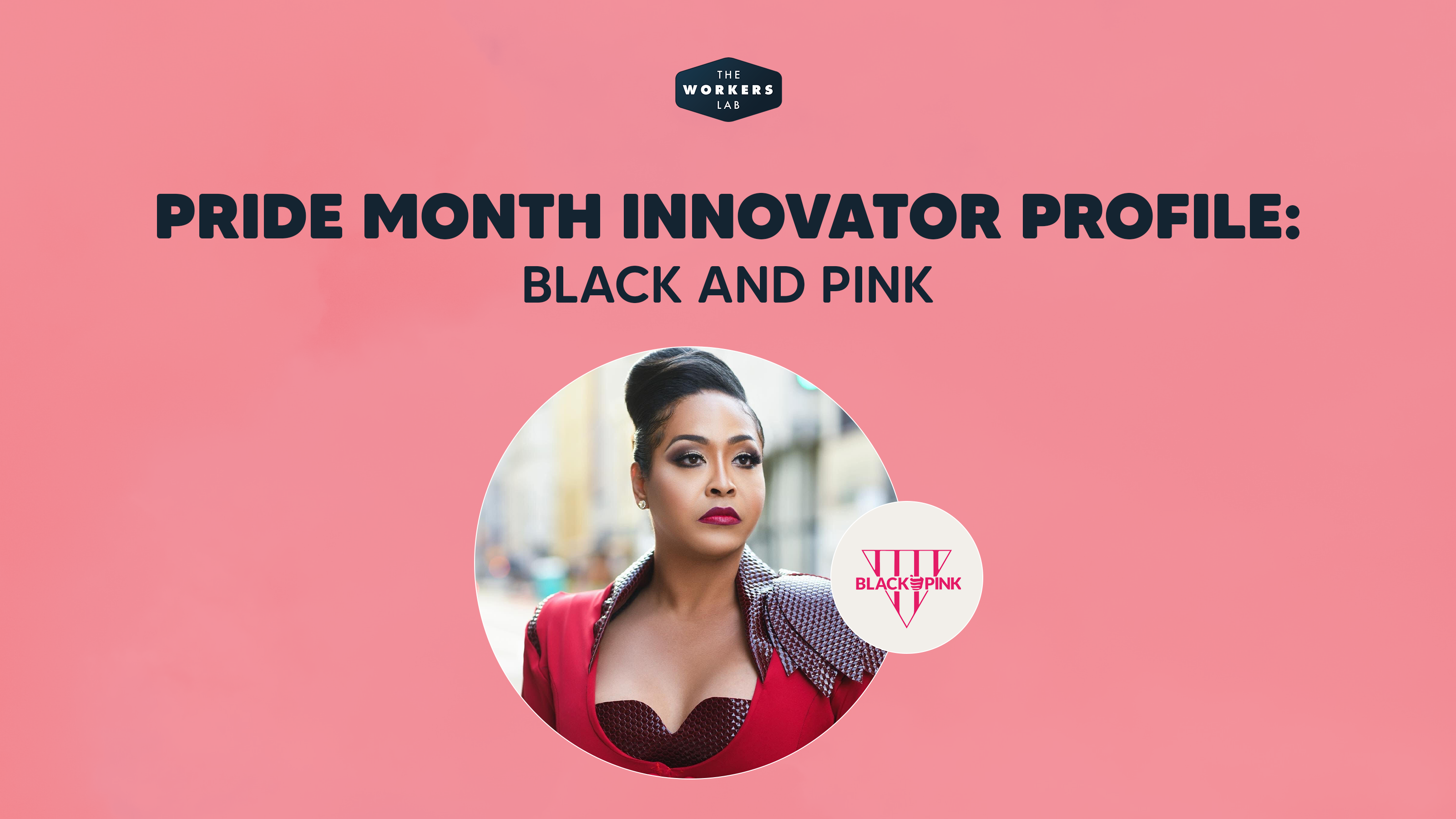We are closing out Pride Month by sharing a profile of the Sex Worker Liberation Project, a program of Black & Pink, that supports the needs of Black and Brown LGTQIA2S+ sex workers nationwide.
When we first funded this amazing nonprofit, its work was focused on building support systems and providing resources for sex workers, in particular as a way to help them develop and control their own businesses. Their work included creating a toolkit, offering access to bail support, providing business development coaching, and helping with access to affirming health care. The work also centered on listening to these people and validating their stories.
We met with Jasmine Tasaki, Black & Pink’s Director of Advocacy, last month to catch up and learn about the latest from Black & Pink, including what the group has learned from the efforts The Workers Lab helped fund. At its heart, the Sex Worker Liberation Project aims to provide for the safety and health needs of Black and Brown LGBTQIA2S+ sex workers nationwide, with a specific focus in the South. The group’s strategic planning and business development supports sex workers in developing sustainable business models that foster their autonomy over their labor. The project also aims to inform health care providers of best practices and connect sex workers with providers who offer compassionate, competent, affirming care. You can learn more about this fantastic group and their work here.
How has your organization changed or grown since The Workers Lab investment?
The most significant shift in our work has been in how we show up in the work we do, specifically when it comes to sex workers. We’ve been able to to be unapologetic, which has amplified our message and empowered the work. Very few people don’t stand in the gaps for people who do sex work, it’s been difficult to find organizations that will be vocal about this work.
Historically we supported LGBTQIA2S+ people who were recently incarcerated and re-entering society, but we found that a lot of those people were sex workers who could benefit from additional support that met their specific needs. Implementing our work showed us different nuances we hadn’t thought about; we learned about their needs, and we were able to improve the program in real time and be strategic about how we’re doing the program for future groups.
We want to create a space where sex workers understand they are valued and that we believe their stories. They are the best people to tell their own stories. They are the best people to curate spaces for their communities. We’ve noticed greatness in these people. They are doing amazing things, and we want to give them space to work on their own projects.
Early on, we needed to change our language. We have a retreat aspect of our program and there were words and language used that we’d change in real time to be more inclusive. The thing we really had to change was our thoughts on the projects we offer. We were not as evolved as what the projects could look like.
Ultimately, we created “How to guides” on safety, on vetting gender affirming care, and on building websites specific to sex work. There are a lot of resources already in existence, so we wanted to find a way to empower these people to inform and help others, and we created and centralized resources they needed.
What are your top priorities as an organization today?
One of our main projects right now is getting the “How to guides” on our website. We want to make sure anyone who needs access to them has them.
We are also undertaking another round of the Sex Worker Liberation Project, which focuses on community organizing. We will bring back the previous participants as facilitators and advisors to a new round of people who do sex work. I’m excited to see how the project will grow and change with the new people.
All of the amazing people from last year’s cohort are doing new innovative things. We’re intentional in finding people who may not know what community organizing is. We want to help them understand there is a network of support. Those are the people we should be reaching because they need the most support. Communities of people who do sex work, or people who use drugs or are communities of color are all vulnerable, and they need to understand and benefit of community organizing.
Black & Pink also has a new executive director, Dr. Tatyana Moaton, who is amazing, and we’re excited to see what she has in store for the organization.
What do you want potential donors to know about your work?
I would love for donors to know our work is not only intentional, impactful, and strategic, but it comes from the heart. The people who work with Black & Pink don’t take the work lightly. We have made it our motto to center our work in the needs of participants and members not in our own needs. We put our members/participants first. We want to model behavior for other organizations. We understand if our members are not served in a way that leads with love, we will lose them. What we do comes from the heart.
What advice do you have for new innovators trying to help workers?
Listen to your participants. Don’t give up on yourself. And don’t let the "no’s" let you feel that you can’t succeed. A lot of times, in this work especially, you get a lot of people who don’t understand and you can't give up. You also have to know when to move on. The culture of how we do the work will shift, so be ready to shift while staying committed to your people.
-Jun-06-2024-03-00-31-8398-PM.png?width=1800&height=1080&name=TWL%20Logo%201%20(1)-Jun-06-2024-03-00-31-8398-PM.png)

